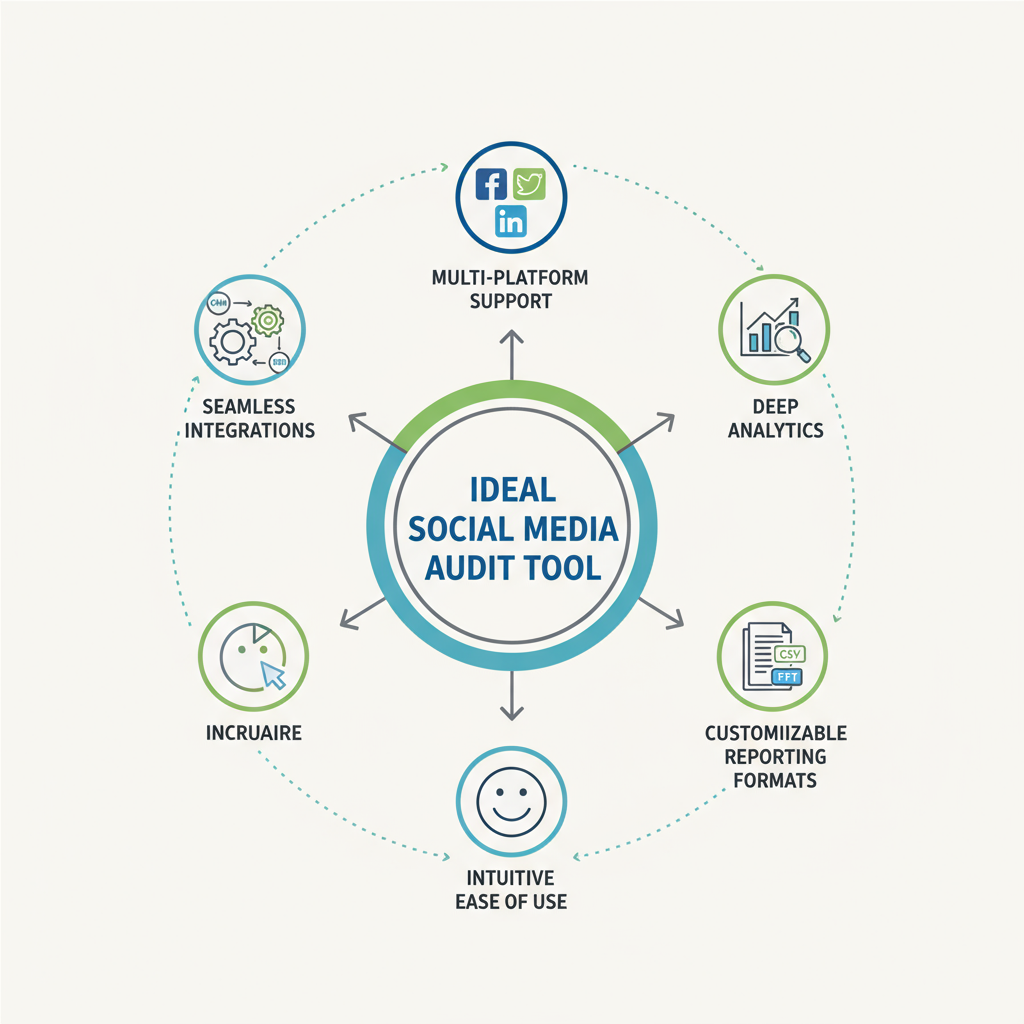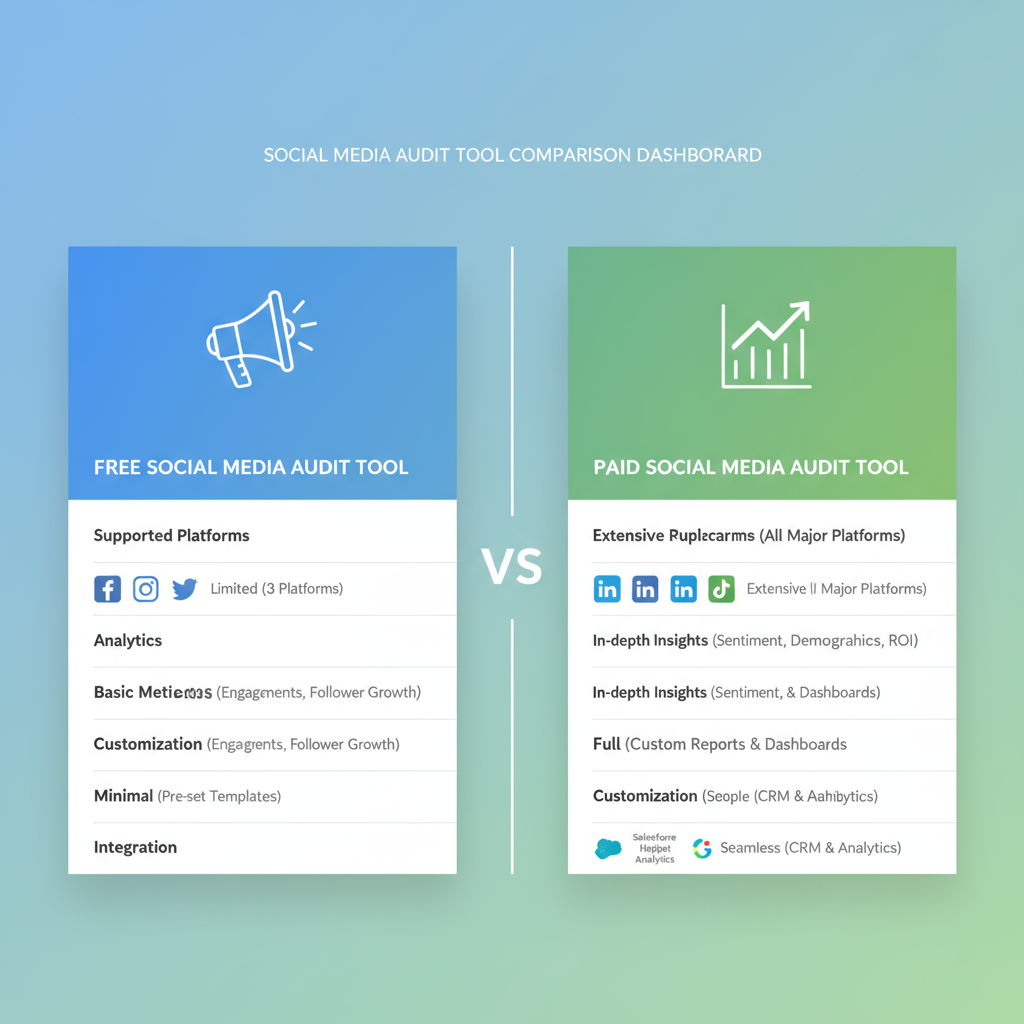How to Choose the Right Social Media Audit Tool for Business
Learn how to choose the right social media audit tool by evaluating features, integrations, and reporting to boost engagement and ROI.

Understanding What a Social Media Audit Tool Is and Why It Matters
A social media audit tool is an application or online service that helps you evaluate the performance, consistency, and effectiveness of your brand’s presence across various social platforms. Regular assessments with these tools act as a diagnostic check-up for your digital footprint, ensuring that you are maximizing engagement and return on investment.
Regular audits reveal:
- Which platforms drive the most engagement
- Gaps or weaknesses in your content strategy
- Changes in audience demographics or behavior
- Competitor activities and trends
By selecting the right tool, you can save time, uncover new opportunities, and make data-driven decisions to fine-tune your social media marketing.

Without systematic audits, brands risk wasting resources on underperforming channels or missing vital industry shifts. This is why finding and using an effective social media audit tool is essential for businesses of any size.
---
Key Features to Look for in a Social Media Audit Tool
To make the right choice, match the capabilities of each tool to your strategic objectives.
1. Multi-Platform Support
Your audience likely spans several networks. Choose a tool able to audit:
- Twitter (X)
- TikTok
- YouTube
The wider the coverage, the more complete your analysis will be.
2. Analytics Depth
Look for meaningful measurements beyond likes and follower counts, such as:
- Engagement rate calculations
- Click-through rates
- Audience growth patterns
- Performance by content type or category
3. Reporting Format
Clear, exportable reports are vital for making informed decisions and sharing findings with stakeholders. Consider:
- Custom dashboards
- PDF and CSV export options
- Automated scheduling for regular reports

---
Free vs. Paid Social Media Audit Tools
Your decision between free and paid options will depend on budget, complexity, and depth of required insights.
| Type | Pros | Cons | Examples |
|---|---|---|---|
| Free | Budget-friendly; quick to start | Limited analytics depth; fewer platform connections | Hootsuite Free Plan, Buffer Free, Metricool Free |
| Paid | In-depth analytics; extensive integrations; premium support | Higher cost; potential training requirements | Sprout Social, Agorapulse, Brandwatch |
Pro Tip: Begin with a free plan to learn the process, then upgrade once you’ve pinpointed your must-have metrics and integrations.
---
Evaluating Ease of Use and Integration
A powerful platform delivers value only if your team can navigate it easily.
Ease of Use Factors:
- Clear, intuitive interface
- Guided onboarding steps
- Comprehensive help docs and tutorials
Integration Considerations:
- CRM systems (e.g., HubSpot, Salesforce)
- Email marketing services (e.g., Mailchimp)
- Project management apps (e.g., Trello, Asana)
- Ad platforms (e.g., Google Ads, Facebook Ads Manager)
Seamless integration with your marketing stack ensures streamlined workflows and centralized data.
---
Assessing Reporting Capabilities for Actionable Insights
The main purpose of an audit is to produce insights you can act upon immediately.
Seek tools that:
- Measure engagement KPIs such as reach, impressions, and interactions
- Provide audience demographic and location data
- Highlight optimal posting times
- Track referral traffic from social media to your site
Automated trend alerts are also valuable—they help you respond quickly to spikes or drops in performance.
---
Competitor Analysis and Benchmarking Features
Understanding your rivals’ strategies allows you to adjust your own position in the market.
Key Features for Competitor Analysis:
- Track posting frequency and timing
- Compare engagement rates
- Identify high-performing content types in your niche
- Benchmark against industry averages
If competitors achieve better engagement with videos, for instance, shifting toward more video content could improve your own results.

---
Using Audit Results to Shape Content Strategy and Engagement
Audit findings are only successful if applied strategically.
- Optimize Posting Schedule: Post at times when your audience is most engaged.
- Refine Content Mix: Focus on formats and topics with strong engagement metrics.
- Adjust Platform Priorities: Invest resources into the networks with the best ROI.
- Experiment with New Tactics: Test different styles, hashtags, and CTAs.
Example: If analytics show Instagram Stories outperform regular posts, adjust your publishing plan to include more Stories.
---
Common Mistakes to Avoid When Choosing a Social Media Audit Tool
Be aware of these common pitfalls:
- Overpaying for unused features — define priorities first.
- Skipping scalability considerations — ensure the tool can grow with you.
- Overlooking support quality — responsive support is key during campaigns.
- Focusing solely on one platform — multi-platform insights give a better overview.
- Not using trial periods — hands-on testing is essential.
---
Selection Checklist Tailored to Your Goals
Keep this checklist handy when assessing tools:
| Requirement | Yes/No | Notes |
|---|---|---|
| Supports all active platforms | ||
| Detailed engagement analytics | ||
| Custom reporting formats | ||
| CRM/Email integration | ||
| Competitor benchmarking | ||
| Scalable pricing | ||
| User-friendly interface | ||
| Responsive support |
---
Recommendations by Business Size and Industry
Small Businesses & Startups:
Start with cost-effective tools such as Metricool, Buffer, or Later. Focus on usability and foundational metrics.
Mid-Sized Companies:
Explore tools like Sprout Social or Agorapulse for richer reporting, team collaboration tools, and campaign tracking features.
Enterprise-Level Brands:
Consider Brandwatch, Sprinklr, or Socialbakers for advanced AI insights, sentiment analysis, and global scalability.
Industry-Specific Considerations:
- E-commerce: Look for shoppable post tracking and product tag analytics.
- B2B: Prioritize LinkedIn reporting and CRM integration.
- Media & Entertainment: Focus on video and multimedia analytics, plus cross-platform reach.
---
Final Thoughts
Choosing the right social media audit tool isn’t about picking the most expensive or feature-packed option—it’s about identifying the tool that best matches your business objectives, available resources, and growth plans. By defining your priorities, trialing multiple options, and focusing on actionable data, you’ll set your brand up for sustained improvement in reach, engagement, and conversions.
Select the platform that fits seamlessly into your workflow, saves you time, and equips you with the insights to make smarter marketing moves. Start your audit process today and unlock your brand’s full social media potential.




